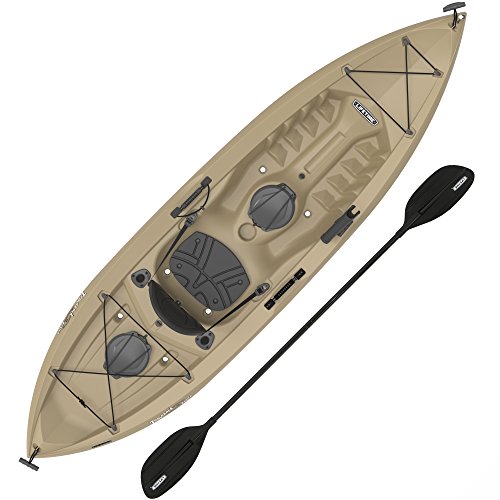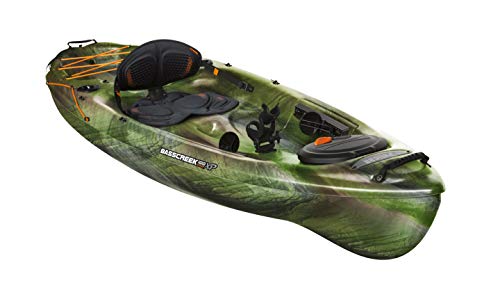Kayak fishing has become increasingly popular among outdoor enthusiasts in recent years, and for good reason. There are numerous benefits to choosing a kayak as your vessel for fishing adventures. One of the biggest advantages of kayak fishing is the ease of access to remote fishing spots. With a kayak, you can navigate shallow waters and narrow channels that larger boats simply can't reach. This allows you to explore untouched fishing grounds and potentially reel in some big catches that other anglers can only dream of.
Another pro of kayak fishing is the affordability factor. Kayaks are much more budget-friendly than traditional fishing boats, making it a great option for those who want to get out on the water without breaking the bank. Additionally, kayaks are easy to transport and store, making them a convenient choice for anglers who don't have the space or resources for a larger boat. With a kayak, you can simply throw it on top of your car or store it in your garage without the need for a trailer or docking space.
One of the most appealing benefits of kayak fishing is the sense of adventure and connection to nature that it provides. Paddling through serene waters and immersing yourself in the natural surroundings can be a truly rejuvenating experience. Kayak fishing offers anglers the opportunity to fish in a more intimate and peaceful setting, away from the noise and crowds of larger boats. Overall, kayak fishing is a rewarding and fulfilling way to enjoy the great outdoors and reel in some impressive catches along the way.
Cons of Kayak Fishing
Another downside of kayak fishing is the limited storage space. Most kayaks are designed with minimal storage capacity, which can make it difficult to bring along all the necessary gear and supplies. This can be especially challenging for anglers who like to fish with multiple rods or who want to bring along additional equipment such as coolers or fish finders.
Additionally, kayak fishing can be physically demanding. Paddling a kayak to the best fishing spots can require a lot of energy, especially if you are fishing in a strong current or against the wind. This can be exhausting for some anglers, particularly those who are not used to physical activity or who have mobility issues. Overall, while kayak fishing can be a fun and exciting way to enjoy the great outdoors and catch some fish, it is important to consider these potential drawbacks before heading out on the water.
Choosing the Right Kayak
1. Type of water: Consider the type of water you will be fishing in most often. If you will be fishing in calm lakes or slow-moving rivers, a recreational kayak may be sufficient. However, if you plan on fishing in rough waters or open ocean, you may want to opt for a more stable and sea-worthy kayak.
2. Storage and transportation: Think about where you will store your kayak when not in use, as well as how you will transport it to and from the water. If you have limited space, a foldable or inflatable kayak may be a good option. Alternatively, if you have a truck or SUV, a larger kayak may be more suitable.
3. Features: Consider the features that are important to you as a fisherman. Are you looking for a kayak with ample storage for your fishing gear? Do you want a kayak with rod holders or a built-in fish finder? Make a list of must-have features to help narrow down your choices.
Ultimately, the right kayak for fishing is one that suits your individual needs and preferences. Take the time to research different options, test out a few models if possible, and consider factors such as water type, storage and transportation, and desired features before making a decision. Happy fishing!
Tips for Successful Kayak Fishing
If you're new to kayak fishing, there are a few key tips that can help you have a successful outing on the water. First and foremost, always make sure you have the right equipment. This includes a sturdy kayak, a comfortable seat, a good quality paddle, and all the necessary fishing gear such as rods, reels, and tackle.
Another important tip is to choose the right location. Look for areas with calm waters and plenty of fish. Research potential fishing spots ahead of time to ensure you're heading to the most promising area. Additionally, be mindful of the weather forecast and always prioritize safety. Make sure you have a life jacket, sunscreen, and plenty of water to stay hydrated.
Once you're out on the water, remember to be patient and persistent. Kayak fishing can be a challenge, but with practice and determination, you'll improve over time. Stay focused and pay attention to your surroundings, keeping an eye out for any signs of fish activity. Finally, don't forget to have fun! Enjoy the peacefulness of being out on the water and appreciate the unique experience that kayak fishing has to offer.





